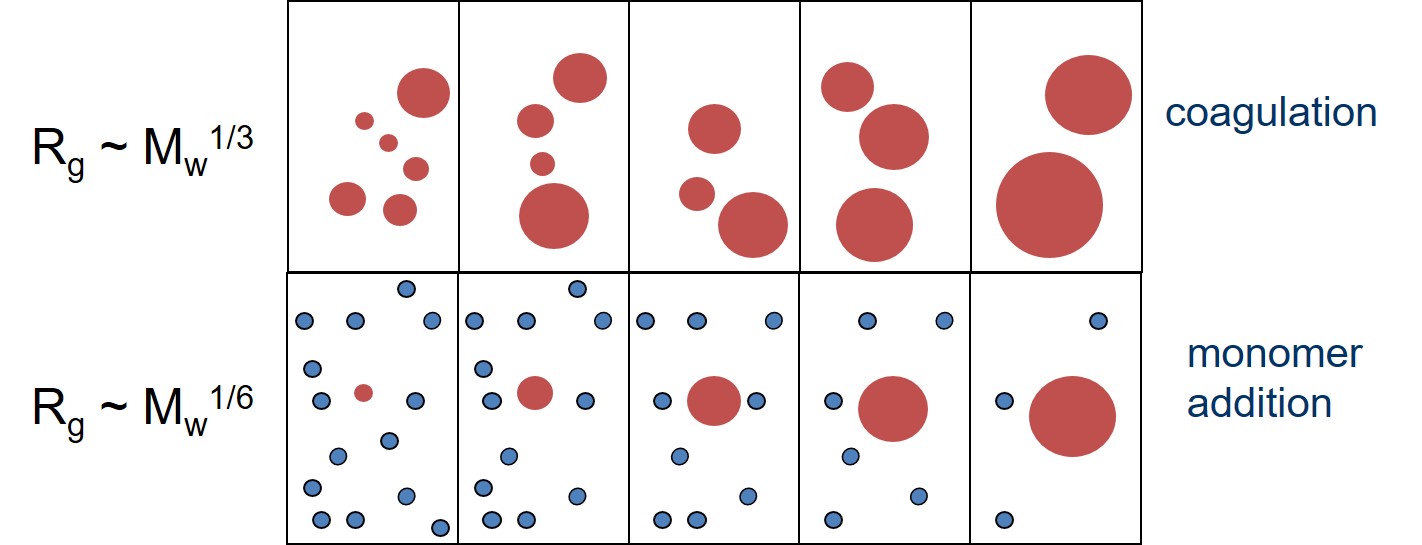Nucleation and Growth of Nano-Particles
Nucleation and growth of particles are essential features of the formation of stable and metastable solid phases in a bottom-up approach and are thus of fundamental relevance to countless processes in nature and industry. Typical examples are the formation of nanoparticles from supersaturated solutions of carbonates, phosphates and silicates relevant to biomineralization and scale formation in pipes, the generation of high performance nanoparticles of noble metals or of metal organic frameworks (MOF) and, to give but an example from organic chemistry, the growth of eumelanin based biological pigments. We succeeded to shed light on the mechanisms of particle formation from amorphous CaCO3 or silica and in our latest effort we are investigating the supramolecular buildup of eumelanin particles. Growth and formation processes are predominantly analysed with time-resolved light scattering and SAXS. New kinetic models are developed and applied for the analysis of time-resolved scattering data in order to reveal nucleation and growth mechanisms for the formation of nanoparticles.
Liu, J. et al.
Evaluation of the Particle Growth of Amorphous Calcium Carbonate in Water by means of the Porod Invariant from SAXS
Langmuir (2010) 26, 17405–17412 DOI: 10.1021/la101888c
Kley, M. et al.
Silica Polymerization from Supersaturated Dilute Aqueous Solutions in the Presence of Alkaline Earth Salts
Langmuir (2017) 33 (24), 6071–6083 DOI: 10.1021/acs.langmuir.7b00887
Büngeler, A. et al.
Insight into the Final Step of the Supramolecular Buildup of Eumelanin
Langmuir (2017) 33 (27), 6895–6901 DOI: 10.1021/acs.langmuir.7b01634
Saha, S. et al.
Insight into Fast Nucleation and Growth of Zeolitic Imidazolate Framework-71 by In Situ Static Light Scattering at Variable Temperature and Kinetic Modeling
Cryst. Growth Des. (2018) 18 (8), 4653–4661 DOI: 10.1021/acs.cgd.8b00626

